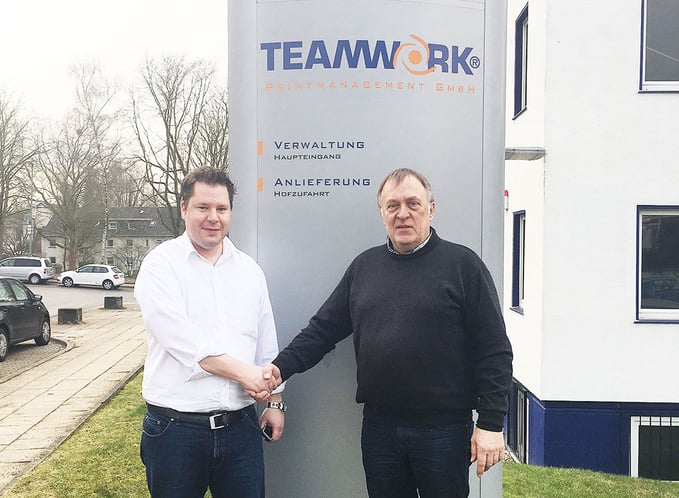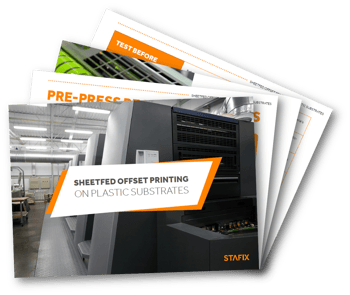
As we already discussed earlier in the previous article, printing on plastic is not difficult, however, it’s also not the same thing as printing on paper. In the article we gave our tips and key points that should be taken into account before printing on a plastic substrate.
This time we wanted to have a closer look into the actual printing process. We interviewed the Managing Directors Christian Scherschel and Heribert Dornebeck from Teamwork Printmanagement GmbH, and asked them about the challenges that are typically faced when printing on plastic materials. They also shared a few examples of special campaigns they have printed on synthetic self-adhesives.
Teamwork Printmanagement GmbH
Teamwork Printmanagement GmbH was originally founded in 1980 and specialized themselves on UV-Offset printing on plastic films from the very beginning. Nowadays they also offer Digital Printing on HP Indigo and have 17 employees. The company is located in Essen, Germany.
What distinguishes Teamwork from other printing houses is the fact that they do some own product development as well, so that they can offer new product innovations with two different printing techniques for their clients. When it comes to printing on plastic, the substrates are mainly PP, polyester, self-adhesive films, synthetic paper and other adhesive materials that are printable with UV-Offset or HP Indigo.
“We are also able to produce hybrid materials, which means a combination of digital printing and a UV varnish or a UV Offset printing with digital personalization, such as QR codes. Printing is our passion and performance is the main principle.”
Customer satisfaction is important for Teamwork and that is why they also run test prints together with their clients in order to get the best results – especially when using completely new materials.
What to take into account when printing on plastic or other synthetic materials?
Printing on plastic or other synthetic material is not as straightforward as printing on paper. Typically the biggest challenges are caused by the surface tension of the material that affects also to the ink adhesion. Also the abrasion resistance varies a lot between different materials.
According to Christian and Heribert, the most important things that should always be taken care of, when printing on plastics, are:
– Flexibility of the inks, especially when a substrate needs to be deformed.
– Very low static charge of the substrate on the surface in order to not get any dust on it.
– Good Die-cut characteristics of the material.
They also point out the importance of the material selection. For example, printing materials should always be PVC-free so that they do not harm the environment.
Exceptional POS campaigns
Plastic printing materials offer many new and innovative ideas for POS advertising.
“Just recently we had a job on a glue free, clear adhesion film where we printed two different artworks plus a barrier layer. The printing process went like this: 4c + white + silver + white + 4c.”. The purpose of the sticker was to use it on deep freezers, which is not that common surface for POS advertising.
Another memorable printing job was a large format sticker for a well-known coffee brand. “We laminated a rapid air film with golden foil and after that printed it with white, 4c, spot color and a varnish.”
Want to know more?
Download our eBook “Sheetfed Offset Printing on plastic substrates” in order to get more comprehensive information about printing on plastics.

See Stafix products in person
Order our free sample folder and discover the sustainable future of self-adhesive POS materials. Stafix products were developed to supercharge your campaigns.
